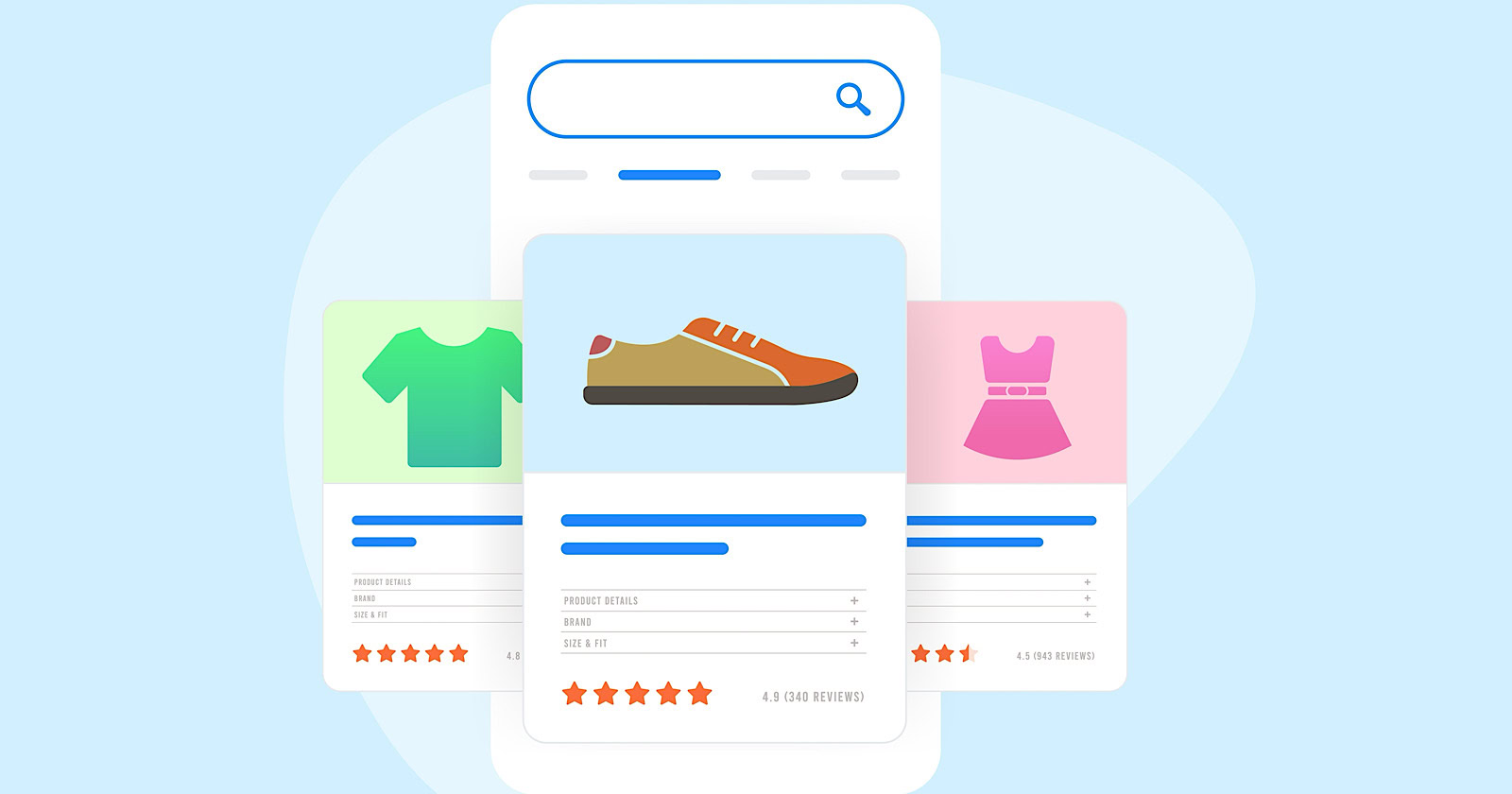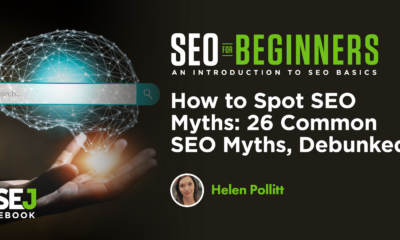SEO
How To Optimize Pages & Beat Competitors

This post was sponsored by SE Ranking. The opinions expressed in this article are the sponsor’s own.
Whether you run a large website or are launching a simple landing page, your goal is the same – you want it to hit the top spot on the SERP.
To make this happen, you need to ensure that your page quality is on par with its direct competitors – or better.
How Do I Rank Higher On Google?
To claim a top SERP position, the best technique is to offer more value than any other page optimized for the same keywords.
Also, you should make sure that your targeted page doesn’t suffer from critical SEO issues that can affect its performance.
These techniques fall under the realm of on-page SEO.
On-page SEO can be performed easier and faster by using an on-page SEO checker.
Tools like on-page SEO checkers are specifically designed to:
- Show where your page stands within the competitive landscape.
- Give you an action plan for bringing your content straight to the top of the SERP.
But for starters, let’s run through some basics.
What Is On-Page SEO?
On-page SEO is the process of optimizing page elements for specific keywords.
When we say “page elements,” we mean things like:
- Content quality.
- Keyword density.
- Title and description.
- URL structure.
- Page experience and usability.
- Media optimization.
- Internal and external links, etc.
Most of these elements can easily be improved, meaning that the page can be optimized for a particular search query.
While this type of optimization works for any page type, including home page, product page, blog post, or landing page, this post will focus on optimizing landing pages.
Why Is On-Page SEO Essential?
Page elements are the primary points of connection between you and your users.
Improving them helps improve their experience.
It also tells search engines more about your pages.
Well-optimized on-page SEO can help improve page rankings and thus increase traffic.
In addition to improving rankings, these page changes help you to hold a user’s attention and more accurately target their queries, making your traffic more meaningful.
How To Do On-Page SEO Tasks
On-page SEO can include a variety of tasks that you’ll need to perform on many different elements.
They can be easy to miss, so make sure you have a thorough checklist and documentation about how to update each element.
In this article, we will give you insights into what to check for in your on-page SEO strategy and how to better target your keywords.
We’ll also show you a great tool that can help.
Because there’s so much to check, an automated tool can be extremely helpful.
Task 1: Run An SEO Audit
The first step for performing on-page SEO is to run an audit.
There are almost 100 elements to check, and some are more important than others.
Step 1: Check Elements That Impact SEO
For landing pages, some of the most important factors are:
- Title.
- Descriptions.
- Keyword density of your primary keywords.
Other checks include:
- Heading structure.
- URL.
- Favicon.
- And so on.
Checking each element individually may take a long time, and it can be difficult to identify errors and fixes.
This is why automated tools are so helpful.
Step 2: Discover Errors & Choose Their Priority
After you uncover changes that will boost your optimization scores, it’s time to decide what to change first.
The weight of each parameter is defined by its effect on your page’s ability to rank on SERPs.
Some examples of important, on-page SEO errors that should be highly prioritized are:
- Missing elements.
- Elements that are optimized for an irrelevant keyword.
- Missing title tags on pages.
Low-priority changes would be minor items, such as a missing favicon, which is less urgent.
How Do I Identify High-Priority Changes?
Tools can be your friend here.
They can speed up the process and help you climb to the top of the SERPs faster.
You want to look for sophisticated tools that can provide flexible recommendations based on individual page types, instead of a standardized list.
The deep analytics that come with more modernized tools can compare target pages with similar search results and calculate the range of recommended metrics.
This way, the recommendations are based on direct competitors’ metrics and take into account niche specifics, instead of offering generalized SEO standards.
Such methodology makes them much more accurate and practical.
One of the more advanced AI-powered tools is SE Ranking.
This on-page SEO checker can help you check and optimize your pages.
How To Use SE Ranking To Run An Audit
To run an audit:
- Enter a URL.
- Select your target location.
- Enter keywords.
Then, let SE Ranking do its magic.
It will check 94 on-page SEO parameters.
Perk: You can choose the depth of analysis – your page can be compared against 3 or up to 50 SERP rivals.
With SE Ranking, it takes only a couple of minutes to run an audit.
Once the check has been completed, you will see the results – every priority change will be listed on one dashboard.

Check Your Quality Score
The tool calculates the page quality from 0 to 100.
The better the page is optimized for the target keyword, the higher the score is.
Your quality score gives you a clear picture of your on-page SEO health, helping clarify if off-page factors are the issue and not poor on-page optimization.
Note that backlink-related parameters, which are also located on the dashboard, do not impact the page’s quality score.
Tackle Your High-Priority Issues
Your next step is to examine the list of issues found on your analyzed page.
SE Ranking’s report includes insight into the page’s content quality, keyword usage and density, page experience and usability, links used on the page, and the page’s backlink profile.
 Screenshot from SERanking.com, June 2022
Screenshot from SERanking.com, June 2022
To help with understanding priorities, your list of tasks is divided into several columns:
- All: Displays scores against all 94 parameters.
- Errors: Shows critical issues worth your immediate attention.
- Warnings: Points to areas worth paying attention to once you have fixed errors.
- Notices: Shares parameters that don’t necessarily affect SEO performance but are good to keep an eye on.
- Passed checks: Gives you something to feel good about.
Now, you can start building your workflow and prioritizing fixes.
Task 2: Competitor Research
Power up your on-page SEO repair tasks by doing some competitor research.
This step will help you clarify what keywords to target and new ways to improve your page further.
Assessing your competitors helps you understand what works and where your page needs improvement most.
Step 1: Look At The SERPs For The Keywords You’re Targeting
A great way to start is to put the keywords you rank for into Google and examine the top results.
What do you notice about them?
Take note of:
- The words they use in their URL, titles, and content.
- Their meta description on the SERP.
- The layout of their page and content.
- How your competitors approach answering the query.
- The CTAs and internal links they used on their page.
Think about the ideas they convey, their approach to the content, and what keywords they use and where.
Step 2: Uncover Competitor Flaws
You’re looking to learn how the most successful pages do it. But you’re also looking for flaws.
Are there any areas that you think you can improve?
Do you see any gaps or unaddressed elements of a query?
Try to identify any patterns you can about the most successful results and compare them to your page.
Make sure that you’re not only fixing things that are missing but also looking for opportunities to improve existing on-page elements.
If you want to get more granular, this is another place where a tool like SE Ranking can help.
How To Use SE Ranking For Competitor Research
A robust tool like SE Ranking can help you benchmark your results against your rivals to better understand how they got to the top of the SERP.
You can easily compare important on-page SEO parameters against your direct competitors without having to dig through the SERPs and evaluate each result, one at a time.
For example, on the screen below, you can check which keywords competitors used, study their titles and headings, and assess their technical metrics.
 Screenshot from SERanking.com, June 2022
Screenshot from SERanking.com, June 2022
All the critical data is at your disposal to ensure that you’re not missing opportunities for improvement.
Quickly See Competitor SERP & Traffic Stats
In the Terms tab, you will see the list of words that were found on your competitors’ pages, along with their search volume potential, count, density, and page elements.
From our experience, using proper keywords on a page while striking the density balance is crucial for landing pages.
The tool shows how many times and in which elements of the page a primary or secondary keyword is used: title, description, main copy, URL, etc.
This helps you identify keywords with real search potential and add them to your page.
You can also fix the keyword density of some search queries that are already on your page.
Leverage Competitor Keyword Flaws
Finally, you can add keywords to relevant page areas that need them.
You will probably notice that SE Ranking makes a distinction between primary and secondary content, just like Google does.
Tools that don’t may unintentionally lure you into keyword stuffing, making you add extra keywords to your main content.
Task 3: Start Updating Your On-Page SEO
By now, you’ve run an audit and performed competitor research.
You should have a good idea of:
- The errors in your on-page SEO that need fixing.
- Areas where your on-page SEO could be improved, compared to competitors.
You’ve made lots of discoveries!
What’s next?
Step 1: Organize Your Workflow
First, create your list of individual tasks.
Start by listing tasks out by priority.
You can either use your own task management system or an on-page SEO tool to organize your list of tasks.
As a rule of thumb, you should prioritize anything that’s missing.
If you haven’t specified things like title tags and meta descriptions, search engines will generate them for you.
You want to be in control of what users see about your page on the SERPs; be sure to add them yourself.
Next, focus on anything that has changed about your keyword priorities.
Did you find new opportunities during your research or discover adjustments you should make to keyword density? These are important too.
Step 2: Get Started
Go ahead and start fixing the issues!
We’re happy to say that most issues with on-page SEO can be fixed from within your CMS.
How To Prioritize SEO Tasks & Track Progress With SE Ranking
If you need help prioritizing and tracking your tasks, SE Ranking can do that all within one tool.
Switch to the SEO Tasks tab.
SE Ranking provides you with a step-by-step plan based on the issues found on your website during the audit.
 Screenshot from SERanking.com, June 2022
Screenshot from SERanking.com, June 2022
The tool groups tasks by priority, category, or status:
- In the By Priority tab, the tool labels all the tasks with high, medium, or low priority.
- In the By Category tab, all the tasks will be grouped according to the page element, to which they correspond.
- In the By Status tab, you will see which tasks should be done and which are already completed.
Start with the most urgent ones. This should give the most tangible result.
You can also add your own custom tasks and assign any priority to them.
For example, if you have been examining the competitor’s page and found something worth adding to your own page, just create a new task.
And vice versa, ignore tasks that you consider irrelevant to your landing page.
After fixing an issue, click on the completed checkbox. The tool will reassess the page quality, and you will instantly see the new score.
The more tasks are completed, the higher the score will be.
Make On-Page SEO Easier – Try An On-Page SEO Checker
There’s no doubt that keeping up with the competition and having your pages optimized is hard work.
But with the right tool in hand, it becomes much easier and faster.
With On-Page SEO Checker, you can measure overall page performance, identify and fix issues that could impact your rankings, enhance your content based on what works for the SERP leaders, and keep track of all the on-page tasks on your agenda.
This will help you move up the ranking ladder and beat your rivals.
Image Credits
Featured Image: Image by SE Ranking. Used with permission.
!function(f,b,e,v,n,t,s)
{if(f.fbq)return;n=f.fbq=function(){n.callMethod?
n.callMethod.apply(n,arguments):n.queue.push(arguments)};
if(!f._fbq)f._fbq=n;n.push=n;n.loaded=!0;n.version=’2.0′;
n.queue=[];t=b.createElement(e);t.async=!0;
t.src=v;s=b.getElementsByTagName(e)[0];
s.parentNode.insertBefore(t,s)}(window,document,’script’,
‘https://connect.facebook.net/en_US/fbevents.js’);
if( typeof sopp !== “undefined” && sopp === ‘yes’ ){
fbq(‘dataProcessingOptions’, [‘LDU’], 1, 1000);
}else{
fbq(‘dataProcessingOptions’, []);
}
fbq(‘init’, ‘1321385257908563’);
fbq(‘init’, ‘307844577657657’); // custom pixel
fbq(‘track’, ‘PageView’);
fbq(‘trackSingle’, ‘1321385257908563’, ‘ViewContent’, {
content_name: ‘optimize-on-page-seo-seranking-spa’,
content_category: ‘on-page-seo seo adnouncement’
});
SEO
Google Cautions On Blocking GoogleOther Bot

Google’s Gary Illyes answered a question about the non-search features that the GoogleOther crawler supports, then added a caution about the consequences of blocking GoogleOther.
What Is GoogleOther?
GoogleOther is a generic crawler created by Google for the various purposes that fall outside of those of bots that specialize for Search, Ads, Video, Images, News, Desktop and Mobile. It can be used by internal teams at Google for research and development in relation to various products.
The official description of GoogleOther is:
“GoogleOther is the generic crawler that may be used by various product teams for fetching publicly accessible content from sites. For example, it may be used for one-off crawls for internal research and development.”
Something that may be surprising is that there are actually three kinds of GoogleOther crawlers.
Three Kinds Of GoogleOther Crawlers
- GoogleOther
Generic crawler for public URLs - GoogleOther-Image
Optimized to crawl public image URLs - GoogleOther-Video
Optimized to crawl public video URLs
All three GoogleOther crawlers can be used for research and development purposes. That’s just one purpose that Google publicly acknowledges that all three versions of GoogleOther could be used for.
What Non-Search Features Does GoogleOther Support?
Google doesn’t say what specific non-search features GoogleOther supports, probably because it doesn’t really “support” a specific feature. It exists for research and development crawling which could be in support of a new product or an improvement in a current product, it’s a highly open and generic purpose.
This is the question asked that Gary narrated:
“What non-search features does GoogleOther crawling support?”
Gary Illyes answered:
“This is a very topical question, and I think it is a very good question. Besides what’s in the public I don’t have more to share.
GoogleOther is the generic crawler that may be used by various product teams for fetching publicly accessible content from sites. For example, it may be used for one-off crawls for internal research and development.
Historically Googlebot was used for this, but that kind of makes things murky and less transparent, so we launched GoogleOther so you have better controls over what your site is crawled for.
That said GoogleOther is not tied to a single product, so opting out of GoogleOther crawling might affect a wide range of things across the Google universe; alas, not Search, search is only Googlebot.”
It Might Affect A Wide Range Of Things
Gary is clear that blocking GoogleOther wouldn’t have an affect on Google Search because Googlebot is the crawler used for indexing content. So if blocking any of the three versions of GoogleOther is something a site owner wants to do, then it should be okay to do that without a negative effect on search rankings.
But Gary also cautioned about the outcome that blocking GoogleOther, saying that it would have an effect on other products and services across Google. He didn’t state which other products it could affect nor did he elaborate on the pros or cons of blocking GoogleOther.
Pros And Cons Of Blocking GoogleOther
Whether or not to block GoogleOther doesn’t necessarily have a straightforward answer. There are several considerations to whether doing that makes sense.
Pros
Inclusion in research for a future Google product that’s related to search (maps, shopping, images, a new feature in search) could be useful. It might be helpful to have a site included in that kind of research because it might be used for testing something good for a site and be one of the few sites chosen to test a feature that could increase earnings for a site.
Another consideration is that blocking GoogleOther to save on server resources is not necessarily a valid reason because GoogleOther doesn’t seem to crawl so often that it makes a noticeable impact.
If blocking Google from using site content for AI is a concern then blocking GoogleOther will have no impact on that at all. GoogleOther has nothing to do with crawling for Google Gemini apps or Vertex AI, including any future products that will be used for training associated language models. The bot for that specific use case is Google-Extended.
Cons
On the other hand it might not be helpful to allow GoogleOther if it’s being used to test something related to fighting spam and there’s something the site has to hide.
It’s possible that a site owner might not want to participate if GoogleOther comes crawling for market research or for training machine learning models (for internal purposes) that are unrelated to public-facing products like Gemini and Vertex.
Allowing GoogleOther to crawl a site for unknown purposes is like giving Google a blank check to use your site data in any way they see fit outside of training public-facing LLMs or purposes related to named bots like GoogleBot.
Takeaway
Should you block GoogleOther? It’s a coin toss. There are possible potential benefits but in general there isn’t enough information to make an informed decision.
Listen to the Google SEO Office Hours podcast at the 1:30 minute mark:
Featured Image by Shutterstock/Cast Of Thousands
SEO
AI Search Boosts User Satisfaction

A new study finds that despite concerns about AI in online services, users are more satisfied with search engines and social media platforms than before.
The American Customer Satisfaction Index (ACSI) conducted its annual survey of search and social media users, finding that satisfaction has either held steady or improved.
This comes at a time when major tech companies are heavily investing in AI to enhance their services.
Search Engine Satisfaction Holds Strong
Google, Bing, and other search engines have rapidly integrated AI features into their platforms over the past year. While critics have raised concerns about potential negative impacts, the ACSI study suggests users are responding positively.
Google maintains its position as the most satisfying search engine with an ACSI score of 81, up 1% from last year. Users particularly appreciate its AI-powered features.
Interestingly, Bing and Yahoo! have seen notable improvements in user satisfaction, notching 3% gains to reach scores of 77 and 76, respectively. These are their highest ACSI scores in over a decade, likely due to their AI enhancements launched in 2023.
The study hints at the potential of new AI-enabled search functionality to drive further improvements in the customer experience. Bing has seen its market share improve by small but notable margins, rising from 6.35% in the first quarter of 2023 to 7.87% in Q1 2024.
Customer Experience Improvements
The ACSI study shows improvements across nearly all benchmarks of the customer experience for search engines. Notable areas of improvement include:
- Ease of navigation
- Ease of using the site on different devices
- Loading speed performance and reliability
- Variety of services and information
- Freshness of content
These improvements suggest that AI enhancements positively impact various aspects of the search experience.
Social Media Sees Modest Gains
For the third year in a row, user satisfaction with social media platforms is on the rise, increasing 1% to an ACSI score of 74.
TikTok has emerged as the new industry leader among major sites, edging past YouTube with a score of 78. This underscores the platform’s effective use of AI-driven content recommendations.
Meta’s Facebook and Instagram have also seen significant improvements in user satisfaction, showing 3-point gains. While Facebook remains near the bottom of the industry at 69, Instagram’s score of 76 puts it within striking distance of the leaders.
Challenges Remain
Despite improvements, the study highlights ongoing privacy and advertising challenges for search engines and social media platforms. Privacy ratings for search engines remain relatively low but steady at 79, while social media platforms score even lower at 73.
Advertising experiences emerge as a key differentiator between higher- and lower-satisfaction brands, particularly in social media. New ACSI benchmarks reveal user concerns about advertising content’s trustworthiness and personal relevance.
Why This Matters For SEO Professionals
This study provides an independent perspective on how users are responding to the AI push in online services. For SEO professionals, these findings suggest that:
- AI-enhanced search features resonate with users, potentially changing search behavior and expectations.
- The improving satisfaction with alternative search engines like Bing may lead to a more diverse search landscape.
- The continued importance of factors like content freshness and site performance in user satisfaction aligns with long-standing SEO best practices.
As AI becomes more integrated into our online experiences, SEO strategies may need to adapt to changing user preferences.
Featured Image: kate3155/Shutterstock
SEO
Google To Upgrade All Retailers To New Merchant Center By September

Google has announced plans to transition all retailers to its updated Merchant Center platform by September.
This move will affect e-commerce businesses globally and comes ahead of the holiday shopping season.
The Merchant Center is a tool for online retailers to manage how their products appear across Google’s shopping services.
Key Changes & Features
The new Merchant Center includes several significant updates.
Product Studio
An AI-powered tool for content creation. Google reports that 80% of current users view it as improving efficiency.
This feature allows retailers to generate tailored product assets, animate still images, and modify existing product images to match brand aesthetics.
It also simplifies tasks like background removal and image resolution enhancement.
Centralized Analytics
A new tab consolidating various business insights, including pricing data and competitive analysis tools.
Retailers can access pricing recommendations, competitive visibility reports, and retail-specific search trends, enabling them to make data-driven decisions and capitalize on popular product categories.
Redesigned Navigation
Google claims the new interface is more intuitive and cites increased setup success rates for new merchants.
The platform now offers simplified website verification processes and can pre-populate product information during setup.
Initial User Response
According to Google, early adopters have shown increased engagement with the platform.
The company reports a 25% increase in omnichannel merchants adding product offers in the new system. However, these figures have yet to be independently verified.
Jeff Harrell, Google’s Senior Director of Merchant Shopping, states in an announcement:
“We’ve seen a significant increase in retention and engagement among existing online merchants who have moved to the new Merchant Center.”
Potential Challenges and Support
While Google emphasizes the upgrade’s benefits, some retailers, particularly those comfortable with the current version, may face challenges adapting to the new system.
The upgrade’s mandatory nature could raise concerns among users who prefer the existing interface or have integrated workflows based on the current system.
To address these concerns, Google has stated that it will provide resources and support to help with the transition. This includes tutorial videos, detailed documentation, and access to customer support teams for troubleshooting.
Industry Context
This update comes as e-commerce platforms evolve, with major players like Amazon and Shopify enhancing their seller tools. Google’s move is part of broader efforts to maintain competitiveness in the e-commerce services sector.
The upgrade could impact consumers by improving product listings and providing more accurate information across Google’s shopping services.
For the e-commerce industry as a whole, it signals a continued push towards AI-driven tools and data-centric decision-making.
Transition Timeline
Google states that retailers will be automatically upgraded by September if they still need to transition.
The company advises users to familiarize themselves with the new features before the busy holiday shopping period.
Featured Image: BestForBest/Shutterstock
-

 SEARCHENGINES5 days ago
SEARCHENGINES5 days agoBillions Of Google goo.gl URLs To 404 In The Future
-

 SEO7 days ago
SEO7 days ago26 Common SEO Myths, Debunked
-
SEARCHENGINES4 days ago
Daily Search Forum Recap: July 22, 2024
-

 SEARCHENGINES6 days ago
SEARCHENGINES6 days agoGoogle Core Update Coming, Ranking Volatility, Bye Search Notes, AI Overviews, Ads & More
-

 SEO5 days ago
SEO5 days ago11 Copyscape Alternatives To Check Plagiarism
-

 SEO6 days ago
SEO6 days agoGoogle Warns Of Last Chance To Export Notes Search Data
-

 AFFILIATE MARKETING5 days ago
AFFILIATE MARKETING5 days agoThe Top 5 AI Tools That Can Revolutionize Your Workflow and Boost Productivity
-
SEARCHENGINES3 days ago
Daily Search Forum Recap: July 23, 2024
















You must be logged in to post a comment Login